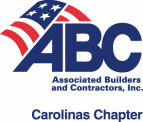If you’re a lower-tier subcontractor or supplier on a public construction project, it might be tempting to calendar your notice-of-claim deadline 90 days (in the case of federal Miller Act projects) or 120 days (in the case of North Carolina “Little Miller Act” projects) from your last furnishing of labor and materials, regardless the nature of that last furnishing.
Resist that temptation.
It overlooks a few simple but critical words recited in the federal Miller Act, as well as similar language contained in North Carolina’s Little Miller Act.
Check out the highlighted words in this excerpt from the federal Miller Act (40 U.S.C. § 3133(b)(2)) (you can click the image for a larger view):
And now take a gander at this excerpt from North Carolina’s “Little Miller Act” (N.C.G.S. § 44A-27(b)) (you can click the image for a larger view):
Both statutes say essentially the same thing: not only must notice of claim under the payment bond be given from 90 days (federal projects) or 120 days (North Carolina public projects) from last furnishing of labor and/or materials; it must be given from the last furnishing of labor and/or materials for which payment is sought.
That distinction can make a world of difference. Here’s an example of how:
 Imagine you’re a second-tier provider & installer of security cameras on a wildlife refuge visitor center project owned by the U.S. Fish & Wildlife Service. Your sub-subcontract is with the project’s first-tier security subcontractor, placing you firmly on the second tier, and within the federal Miller Act’s notice-of-claim requirements. You last performed installation work on April 30, 2014, and later that day you submitted your final invoice, seeking payment in-full. As of July 31, 2014, however, you hadn’t been paid the balance of your sub-subcontract; nor had you furnished notice of claim under the prime contractor’s payment bond. You then spent a week in August training employees on the system’s operation (part of your base scope) and switching out a few cables (arguably extra work, but you neither provided notice of claim nor sought a change order timely, as required by your sub-subcontract).
Imagine you’re a second-tier provider & installer of security cameras on a wildlife refuge visitor center project owned by the U.S. Fish & Wildlife Service. Your sub-subcontract is with the project’s first-tier security subcontractor, placing you firmly on the second tier, and within the federal Miller Act’s notice-of-claim requirements. You last performed installation work on April 30, 2014, and later that day you submitted your final invoice, seeking payment in-full. As of July 31, 2014, however, you hadn’t been paid the balance of your sub-subcontract; nor had you furnished notice of claim under the prime contractor’s payment bond. You then spent a week in August training employees on the system’s operation (part of your base scope) and switching out a few cables (arguably extra work, but you neither provided notice of claim nor sought a change order timely, as required by your sub-subcontract).
It’s now September 29, 2014. You still haven’t been paid. Worse still, the first-tier subcontractor filed for bankruptcy protection last Friday. You decide it’s time to put the prime contractor and its surety on notice of your payment bond claim, citing your last day on-site in August (which was obviously less than 90 days ago) as your last furnishing date.
That might not do the trick. Why? Because you didn’t bill for your August work. In fact, your documentation shows that you billed for the entire remaining balance of your subcontract at the end of April. Sure, the training work you performed in August was pursuant to your contractual obligations, so you have that going for you. But would a trial court judge conclude that was work for which payment was sought, when final payment was sought back in April? Your final invoice could be a major obstacle.
The good news is courts tend to afford public payment bond statutes a liberal construction. The bad news is that they also tend to construe statutory notice and suit deadlines strictly. As an example, check out how Judge Boyle trimmed the second-tier subcontractor’s Miller Act claim in AMEC Environment & Infrastructure, Inc. v. Structural Associates upon finding that the claim was asserted well after the claimant’s base scope of work had been completed.
The takeaway? When you’re a remote sub or supplier on a government project, and therefore subject to the notice-of-claim requirements of the Miller Act or Little Miller Act, be mindful in establishing your date of last furnishing. Don’t assume commissioning, training, punch list work, providing replacement parts or similar activities represent last performance, particularly if you have already submitted a “final” bill prior to such performance. Once you submit an invoice for final payment, it may be difficult to prove that any subsequent activity represents performance “for which payment is sought.”
Generally speaking, the most conservative approach is to set your claim notice deadline based on the date you last performed labor and/or supplied material for which you actually sought payment, and avoid reliance on subsequent commissioning, training or similar activities (unless, of course, you’re planning to hold off on your “final” billing until these activities are actually completed). Better still, consult with an experienced construction attorney to map out an appropriate strategy for ensuring your payment rights are secured timely.









Nice post Matt. A good reminder that, in the rush of project completion, not only is it important to calendar your statutory deadlines but, even more importantly, to “correctly” calendar those deadlines because the date of invoicing likely is not the same as the date in which you completed your work.
California seems to give a little more leeway to subcontractors and material suppliers and provides that a mechanic’s lien may be recorded after the lien claimant ceases to provide work but before the earlier of 90 days following completion of the work of improvement (as a whole) or 30 days after the owner records a notice of completion or notice of cessation.
Here’s what California Civil Code section 8414 says:
A claimant other than a direct contractor may not enforce a
lien unless the claimant records a claim of lien within the following
times:
(a) After the claimant ceases to provide work.
(b) Before the earlier of the following times:
(1) Ninety days after completion of the work of improvement.
(2) Thirty days after the owner records a notice of completion or
cessation.
For subcontractors and material suppliers who perform work or furnish materials or equipment toward the end of a project (e.g., the painting sub, the HVAC balancing company), however, they need to be careful because they don’t have the leeway that trades who perform work earlier in the project do (e.g., the foundation or framing subcontractor).
Thanks, Garret! You’re not joking — that “notice of cessation” standard can be rough on completing trades.
Matt, this is a very nice post, and another reminder that the details in these bond claims and mechanics lien filings can be very, very…detailed.
No doubt, Scott. Thanks for commenting!
Matt – Great post as always.
The post raises an interesting question: Suppose you have a second-tier subcontractor that starts work in January and finishes work in December. In March some of the work performed by the subcontractor is questioned, the 1st tier subcontractor ends up putting labor and material into what it considers to be correction of that work, and when the subcontractor submits its pay app for March there is a backcharge taken by the 1st tier subcontractor. The second tier subcontractor objects to the backcharge, but continues performing work on the project and the work on all pay apps from April through December is paid in full by the 1st tier subcontractor. As part of the closeout on its work, the 2nd tier sub demands payment for the amount withheld due to the backcharge in March and the 1st tier sub refuses. Can the 2nd tier sub now make a claim on the payment bond?
Based on the language of the statutes, it would appear that the answer is ‘no’ absent the sub having given notice within 90 or 120 days (depending on whether it is a state or federal project) of its performing the disputed work in March. And, if that is the case, then the prudent practice of remote subcontractors should be to immediately serve a bond claim notice on the GC any time a change order claim is denied, a backcharge is issued, or any other action is taken for which the subcontractor may want later to make a claim premised on non-payment for work performed, materials provided, etc. In my practice I tend to see notices being given only at the end of a sub’s work, as if the sub was proceeding under the language of the lien statutes.
Ahhhhhhhh, another mind-binder from Jason Herndon! I need to sleep on this one. Provocative question.